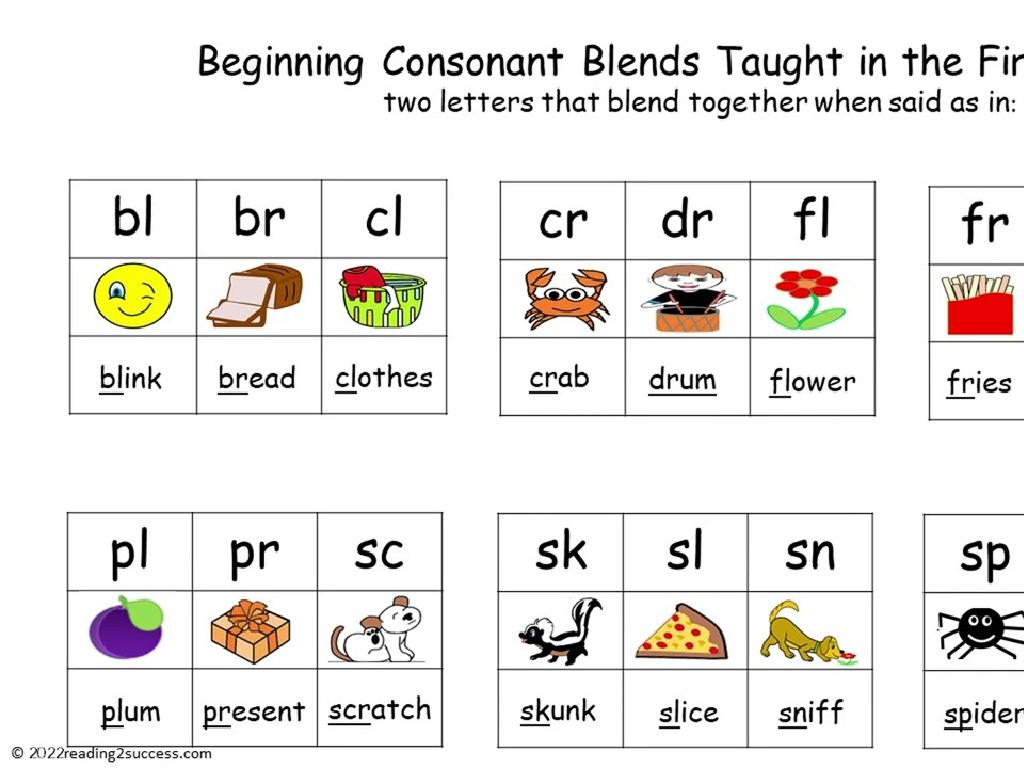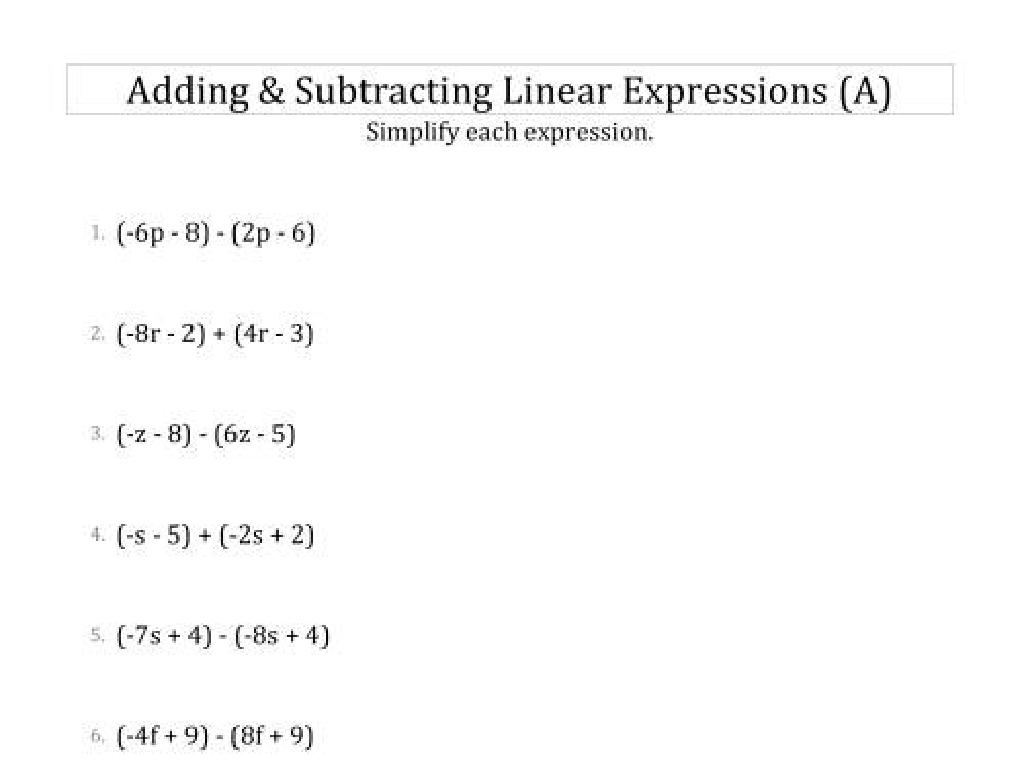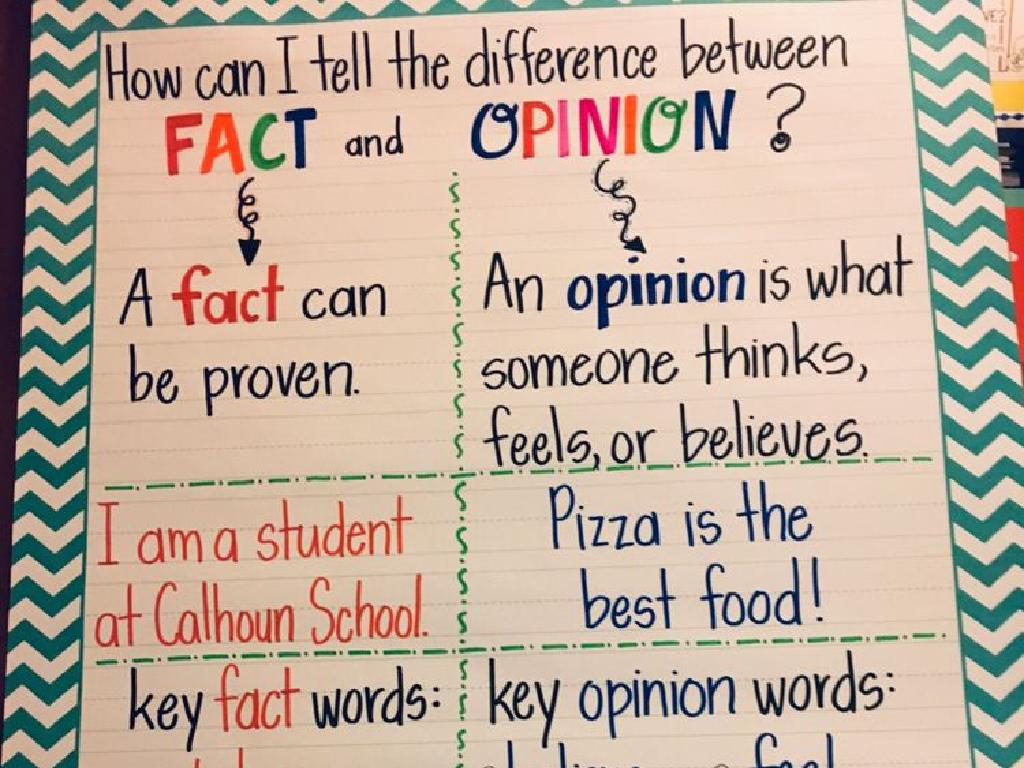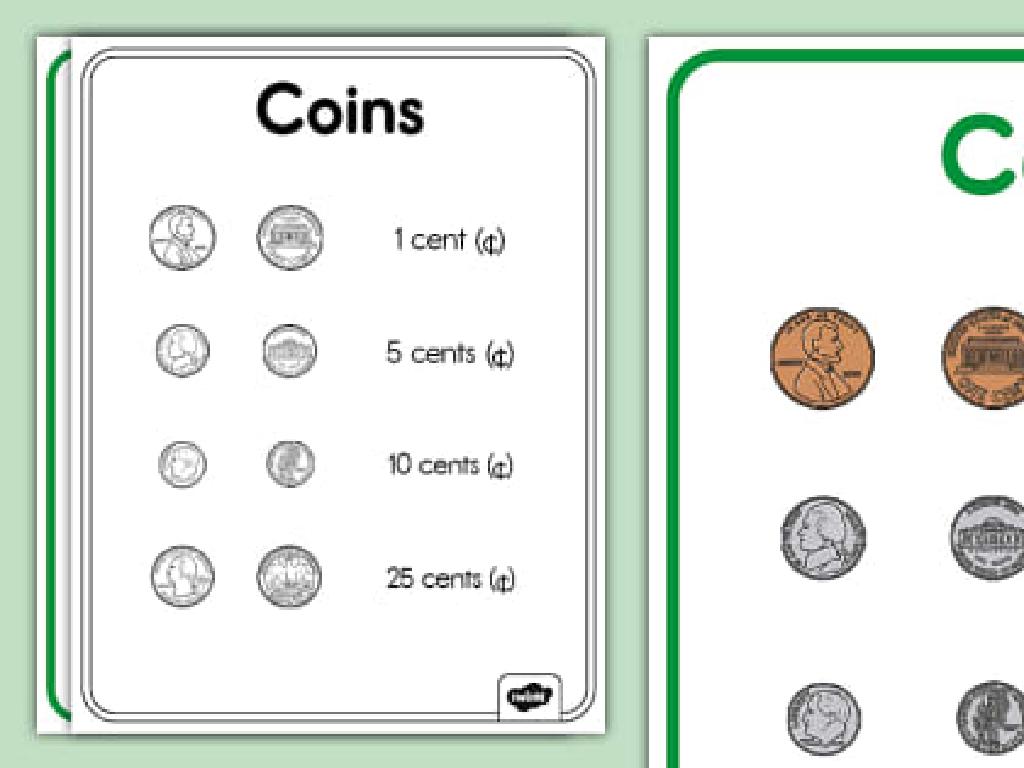Reflections Over The X- And Y-Axes: Graph The Image
Subject: Math
Grade: Seventh grade
Topic: Transformations
Please LOG IN to download the presentation. Access is available to registered users only.
View More Content
Understanding Reflections in Math
– What are transformations?
Transformations change a shape’s position or size.
– Reflections over axes explained
Reflections flip a shape over a line, like a mirror image.
– Real-life applications of reflections
Used in design, art, and to understand symmetry.
– Activity: Graphing reflections
|
Begin with a brief overview of transformations, emphasizing that they are operations that alter the position, size, or shape of figures. Then, focus on reflections, explaining that they create a mirror image of a shape over a specific line, such as the x-axis or y-axis. Discuss how reflections are present in everyday life, such as in symmetry in nature and design. Conclude with a class activity where students will practice graphing reflections on coordinate planes, reinforcing their understanding of the concept. Provide examples and guide them through the process step by step, ensuring they grasp the concept of ‘flipping’ a shape across an axis.
Understanding Reflections in Geometry
– Define geometric reflection
– A flip over a line where the figure is the same distance from the line on the opposite side.
– Compare reflection to other transformations
– Unlike rotation/translation, reflection is flipping over a line, not moving around or sliding.
– Real-world reflection examples
– Mirrors, still water, or symmetry in butterfly wings.
– Reflections on coordinate axes
– Reflecting over x-axis or y-axis changes the sign of the y-coordinate or x-coordinate, respectively.
|
This slide introduces the concept of reflection in geometry, which is a type of transformation where a figure is flipped across a line, creating a mirror image. It’s important to differentiate reflections from rotations (turning around a point) and translations (sliding from one place to another). Use everyday examples like looking in a mirror or seeing reflections in water to make the concept relatable. Explain how reflections work on a coordinate plane, emphasizing that points are the same distance from the axis of reflection but on opposite sides. This foundational understanding will be crucial for graphing reflections in subsequent lessons.
Reflections Over the X-axis
– Reflecting a point over the x-axis
– To reflect a point, invert its y-coordinate
– Rules for x-axis shape reflections
– Keep x-coordinates same, invert y-coordinates of all vertices
– Triangle reflection practice
– Example: Triangle ABC to A’B’C’ over x-axis
|
This slide introduces the concept of reflecting points and shapes over the x-axis, a key topic in understanding transformations in geometry. Start by explaining that reflecting a point across the x-axis involves changing the sign of the y-coordinate while keeping the x-coordinate the same. For shapes, apply this rule to each vertex to find the reflected shape. Use a triangle as a practice example to solidify understanding. Have students draw a triangle on a coordinate plane, label its vertices, and then reflect it over the x-axis to find the new coordinates of the reflected triangle. This visual and hands-on approach will help students grasp the concept of reflections.
Reflections Over the Y-axis
– Reflecting a point over the y-axis
– To reflect a point, switch the sign of the x-coordinate
– Rules for y-axis shape reflections
– Keep the y-coordinates the same, change the sign of x-coordinates
– Practice with a square reflection
– Reflect each vertex of the square over the y-axis
– Understanding reflection coordinates
– After reflection, (x, y) becomes (-x, y) for each point
|
This slide introduces the concept of reflecting points and shapes over the y-axis. Start by explaining that a reflection is a flip over a line, in this case, the y-axis. When reflecting a point across the y-axis, only the x-coordinate changes sign. For shapes, apply this rule to each vertex to find the reflected shape. Use a square as a practice example because its regular shape makes it easier to visualize the reflection. Have students practice by plotting a square on graph paper and reflecting it over the y-axis, noting the changes in coordinates. Emphasize that the y-coordinates remain unchanged during this type of reflection.
Reflections in the Coordinate Plane
– Plot points on the coordinate plane
– Reflect points and shapes
– Flip points/shapes over an axis to ‘mirror’ them
– Coordinate changes after reflection
– Points reflected over x-axis (x, y) to (x, -y), over y-axis (x, y) to (-x, y)
– Practice with reflection examples
– Use sample shapes to apply reflection over axes
|
This slide introduces students to the concept of reflection in the coordinate plane, a key component of understanding transformations in mathematics. Start by revising how to plot points on the coordinate plane. Then, explain how reflecting points or shapes over the x- or y-axis creates a ‘mirror image.’ Emphasize the change in coordinates that occurs during reflection: over the x-axis, the y-coordinate changes sign; over the y-axis, the x-coordinate changes sign. Provide examples of reflecting given points and shapes to solidify understanding. Encourage students to practice with additional examples and to predict the outcomes of reflections before plotting them.
Let’s Practice Reflections!
– Reflect shapes over axes
– Identify vertices coordinates
– Original (x, y) becomes (-x, y) over y-axis, (x, -y) over x-axis
– Discuss coordinate changes
– Coordinates switch signs depending on the axis of reflection
– Observe reflection properties
|
This class activity is designed to help students understand the concept of reflection over the x- and y-axes through hands-on practice. Provide students with graph paper and shapes to reflect over the axes. Guide them to plot the original shape and its reflection, then identify the coordinates of the vertices before and after reflection. Discuss as a class how the coordinates change, noting that reflecting over the y-axis changes the sign of the x-coordinates, while reflecting over the x-axis changes the sign of the y-coordinates. Encourage students to observe the symmetry of the original and reflected shapes. Possible activities include reflecting different shapes, comparing reflections over both axes, and predicting reflections before graphing.
Reflections in Real Life
– Reflections in architecture
– Buildings often use reflective symmetry for aesthetic appeal.
– Symmetry in nature
– Many plants and animals show reflective symmetry; think of butterfly wings.
– Reflections in design
– Designers use reflections to create patterns and balance in their work.
– Artistic use of reflections
– Artists use reflections to add depth and perspective to their creations.
|
This slide aims to show students how the concept of reflections over the x- and y-axes is applied in the real world. In architecture, reflective symmetry can be seen in the design of buildings and structures, enhancing their visual appeal. Nature provides numerous examples of symmetry, such as the wings of a butterfly, which can be a great way to relate the concept to something students can observe in their environment. In design, reflections are used to create patterns and establish balance. Lastly, in art, reflections are a tool for artists to add depth and perspective, making their artwork more lifelike. Encourage students to find and bring examples of reflections they observe around them, fostering a connection between mathematical concepts and the real world.
Class Activity: Reflection Art
– Create reflection artwork
– Draw shape and its reflection
– Reflect the shape across an axis
– Use graph paper for precision
– Helps ensure accurate reflections
– Share and explain your work
– Discuss the reflection over x or y-axis
|
This activity is designed to help students understand the concept of reflections in a fun and creative way. Provide each student with graph paper and ask them to draw a simple shape on one side of an axis. Then, they should reflect that shape over the x-axis or y-axis to the other side. Encourage creativity in their shapes and reflections. After completing their artwork, students will share their drawings with the class and explain the process they used to reflect their shape. Possible shapes include triangles, squares, or any polygon. Ensure students understand that every point of the original shape has a corresponding point in the reflected shape, equidistant from the axis. This hands-on activity will reinforce their understanding of reflections in coordinate geometry.
Reflections Review & Q&A Session
– Recap: Reflections over axes
– A reflection flips a figure over a line like a mirror image. Remember how we reflected shapes over the x-axis and y-axis?
– Invite student questions
– Address student doubts
– If something wasn’t clear, now is the time to ask!
– Offer more reflection examples
– Let’s look at more examples to ensure everyone understands reflections.
|
This slide is meant to consolidate the students’ understanding of reflections over the x- and y-axes. Begin with a brief recap of the concept, emphasizing the ‘mirror image’ nature of reflections. Open the floor to students, encouraging them to ask questions about any aspect of reflections they may find confusing. Address these questions with patience and clarity, providing additional examples if necessary to ensure comprehension. Examples could include reflecting points, shapes, and complex figures across the axes, and demonstrating how the coordinates change as a result. This interactive session will help reinforce the lesson and prepare students for applying the concept in various contexts.
Homework: Mastering Reflections
– Complete reflection worksheet
– Practice reflecting shapes
– Use graph paper to flip shapes over the axes
– Review both x-axis and y-axis reflections
– Remember, reflecting over x-axis changes y-coordinates, over y-axis changes x-coordinates
– Get ready for a transformations quiz
|
This homework assignment is designed to reinforce the concept of reflections over the x- and y-axes. Students should complete the provided worksheet, which includes various shapes that they need to reflect across both axes. Encourage them to use graph paper for accuracy and to visualize the transformation. Remind them that when reflecting over the x-axis, the y-coordinates change sign, and when reflecting over the y-axis, the x-coordinates change sign. This practice is crucial for their understanding and will prepare them for the upcoming quiz on transformations. Make sure they understand the concept of reflections so they can apply it to different shapes and positions on the coordinate plane.






